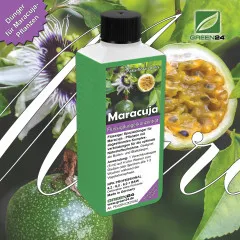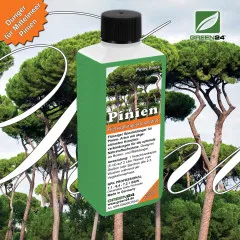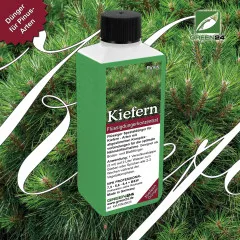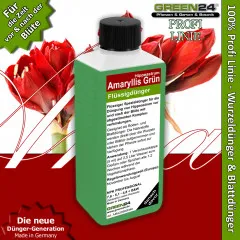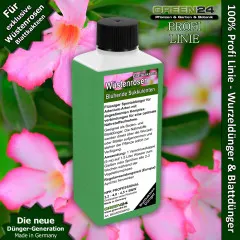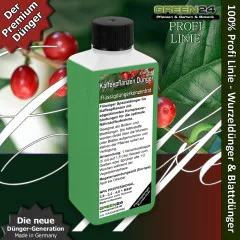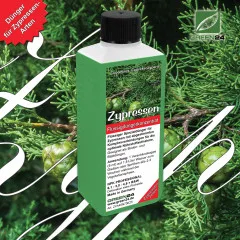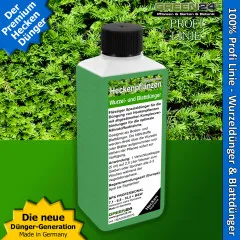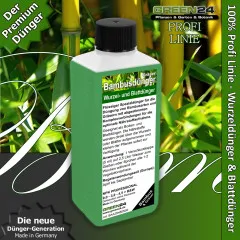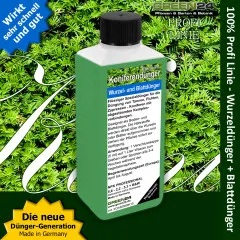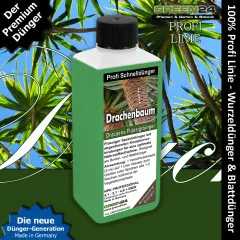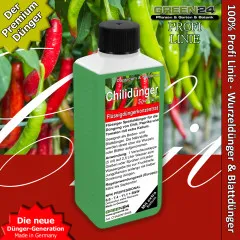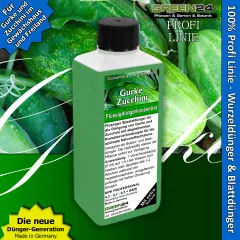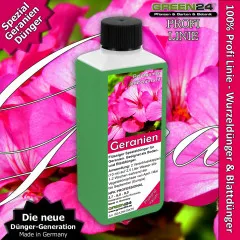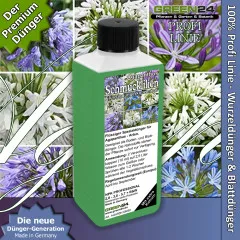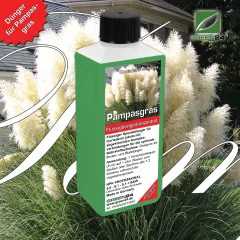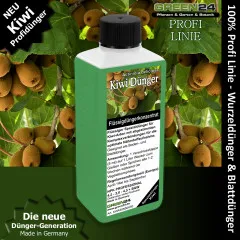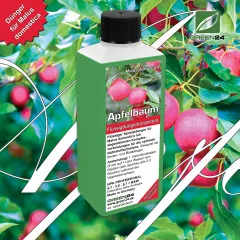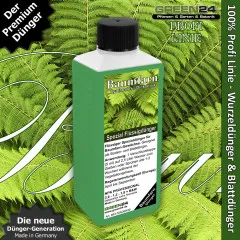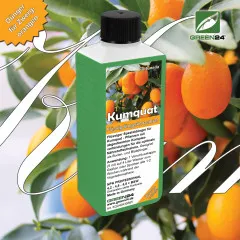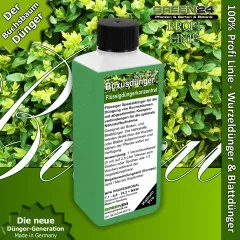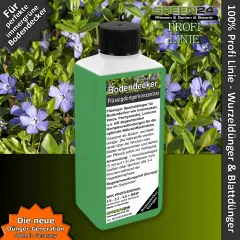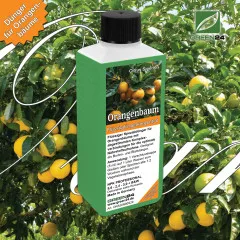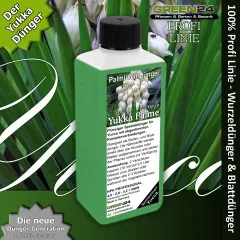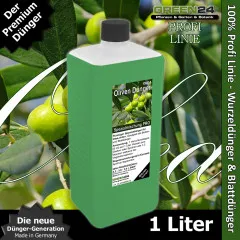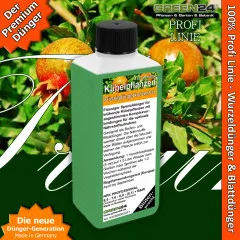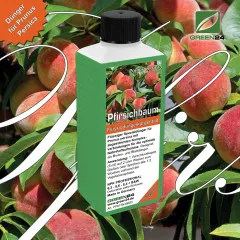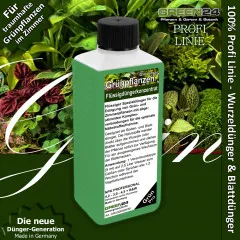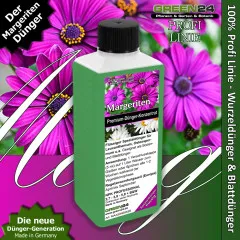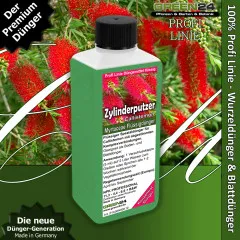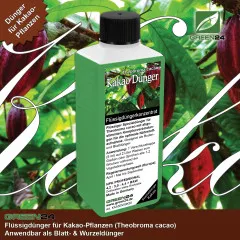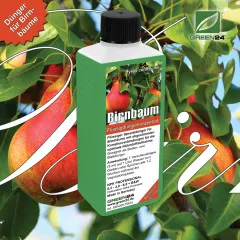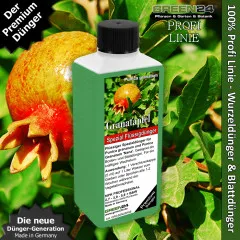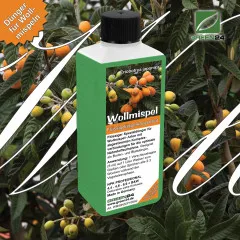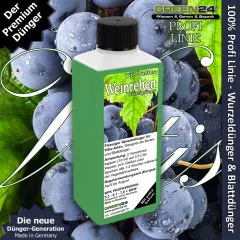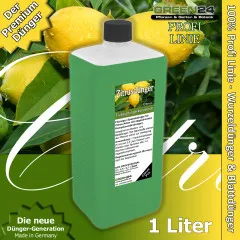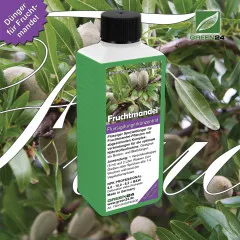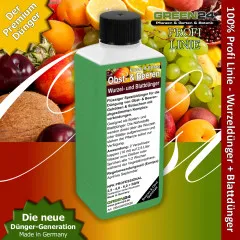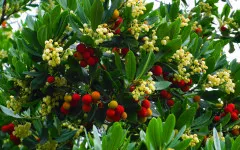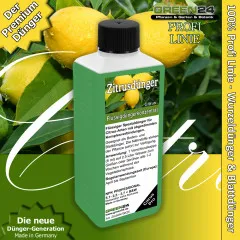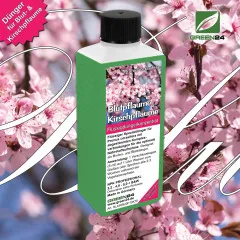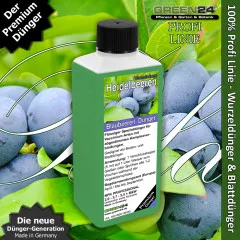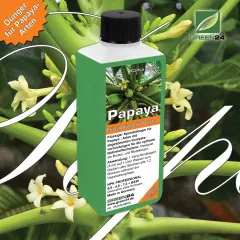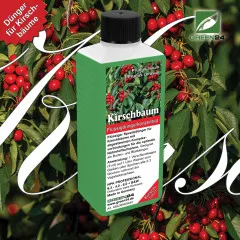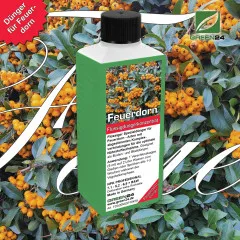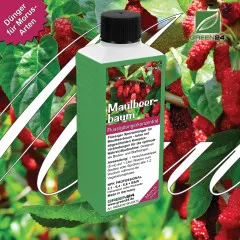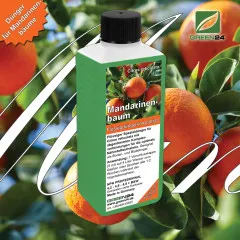Mediterranean Dreams: GREEN24 Specialized Fertilizer for Olive Trees
Olive trees (Olea europaea) are the embodiment of Mediterranean lifestyle and delight with their millennia-old cultural history, characteristic silvery-green leaves, and precious fruits. As symbols of peace, wisdom, and longevity, they bring authentic Mediterranean flair to every garden, patio, and conservatory. As demanding Mediterranean shrubs, they require specially tailored nutrient supply to unfold their full splendor and deliver rich harvests. Our Olive Specialized Fertilizer is precisely tailored to these special needs.
Plant Profile: Olive Tree (Olea europaea)
- Family: Oleaceae (Olive family)
- Genus: Olea (Oil tree)
- Species: Olea europaea (True Oil Tree, European Olive)
- Origin: Mediterranean region (Spain, France, Italy, Greece, Turkey, Northwest Africa)
- Description: Evergreen tree with characteristic silvery-green leaves
- Special Feature: Ancient cultivated plant with over 6000 years of cultivation history
- Important Varieties:
- 'Leccino' - Robust Italian variety, winter hardy
- 'Frantoio' - High-quality oil olive from Tuscany
- 'Picual' - Spanish main variety, very productive
- 'Koroneiki' - Greek dwarf olive, compact
- 'Arbequina' - Catalan variety, early bearing
- 'Cipressino' - Columnar growth, space-saving
- 'Bouteillan' - French variety, very winter hardy
- 'Ascolana' - Large table olives, decorative
- Growth form: Tree or large shrub, 3-10m height, gnarled trunk
- Leaves: Evergreen, leathery, green above, silvery below
- Flowers: Small white panicles in May/June, fragrant
- Fruits: Olives (stone fruits), green to black, edible
- Lifespan: Extremely long-lived, up to 1000+ years
- Winter hardiness: USDA Zone 8-11 (down to approx. -10°C)
- Uses: Container plant, conservatory, open ground (mild locations)
The Science of Olive Nutrition
The Mediterranean Formula for Authentic Olive Culture
Olive trees have special nutrient requirements as Mediterranean, drought-resistant shrubs for optimal development:
- Nitrogen (N) for Leaf and Shoot Growth: Essential for characteristic silvery-green leaves and strong shoots. Nitrogen promotes photosynthesis and growth.
- Phosphorus (P) for Flowers and Fruits: Central for flower formation and fruit development. Phosphorus supports energy metabolism and olive production.
- Potassium (K) for Fruit Quality: Important for oil content, flavor, and winter hardiness. Potassium regulates water balance and strengthens cell walls.
- Calcium (Ca) for Cell Stability: Essential for firm cell walls and disease resistance. Calcium improves fruit quality and storability.
- Magnesium (Mg) for Chlorophyll: Central atom of chlorophyll, important for photosynthesis and healthy leaf coloration.
- Iron (Fe) for Leaf Health: Prevents chlorosis and ensures rich green leaves. Iron deficiency is common in olive trees.
- Boron (B) for Fruit Set: Critical for flower formation and fruit set. Boron deficiency leads to poor fertilization.
- Trace Element Complex: Zinc for growth hormones, manganese for enzyme activity, molybdenum for nitrogen utilization.
- Complex Compounds: Chelated nutrients remain plant-available even in calcareous soil.
Application: Professional Care for Your Olive Trees
Root Feeding (Main Method)
- Dosage by Tree Size:
- Young olive trees (up to 1m): 4-5ml concentrate per 1L water
- Medium trees (1-2m): 6-8ml concentrate per 1.5L water
- Large trees (over 2m): 8-10ml concentrate per 2L water
- Container plants: 3-4ml concentrate per 1L water
- Frequency by Season:
- Main growth (April-June): Every 4-7 days
- Summer (July-August): Every 1-2 weeks
- Autumn (September): Stop fertilizing!
- Overwintering (October-March): Maximum every 4-8 weeks at 5°C+
- Application: Water soil well before fertilizing, then distribute fertilizer solution evenly in root area
- Special note: Olive trees prefer rather sparse but regular fertilizing
Foliar Spraying (Mediterranean Boost)
The characteristic silvery-green olive leaves are excellent for spray feeding and enable rapid nutrient uptake.
- Dosage: 2-5ml per 1 liter of water
- Application: Spray leaves from both sides, especially with deficiency symptoms
- Frequency: Every 1-3 weeks in addition to root feeding
- Optimal times: Early morning hours or late evening hours
- Tip: Use lime-free water (rainwater) for optimal uptake
Care Guide for Olive Trees
Location and Substrate
- Light: Full sun, at least 6-8 hours direct sun
- Substrate: Well-draining, mineral, slightly alkaline (pH 7.0-8.0)
- Drainage: Absolutely necessary, no waterlogging
- Wind protection: Sheltered location, especially in winter
Overwintering (Important!)
- Temperature: Optimal 5°C (±5°C), bright and airy
- Location: Conservatory, cold house, bright basement
- Watering: Sparingly, keep substrate only slightly moist
- Fertilizing: Maximum every 4-8 weeks, reduced dosage
Special Features of Olives and Their Uses
Cultural History and Symbolism
- Ancient tradition: Over 6000 years of cultural history
- Mythology: Gift of goddess Athena to humanity
- Peace symbol: Olive branch as universal peace sign
- Longevity: Trees can live over 1000 years
Mediterranean Garden Design
- Container culture: Mobile Mediterranean oases for patios
- Conservatory: Year-round Mediterranean atmosphere
- Open ground: As garden trees in mild locations
- Bonsai culture: Miniature olive trees as artworks
Culinary Use
- Table olives: Pickled green or black olives
- Olive oil: High-quality oil from own olives
- Mediterranean cuisine: Authentic ingredients from own cultivation
- Health: Rich in unsaturated fatty acids and antioxidants
Seasonal Development
- Spring: New shoots, silvery-green leaves
- Summer: Small white flower panicles, fruit set
- Autumn: Olive ripening, fruit harvest
- Winter: Rest period, characteristic silhouette
Problem Solving Through Targeted Nutrient Supply
Common Problems and Solutions
- Yellow leaves: Iron deficiency or waterlogging → Improve drainage, give chelated iron
- Poor fruit set: Boron deficiency or too little light → Boron fertilizing, choose sunnier location
- Slow growth: Nutrient deficiency or too cool location → Intensify fertilizing, find warmer place
- Brown leaf tips: Salt stress or drought → Reduce dosage, water more regularly
- Leaf drop in winter: Too warm overwintering → Choose cooler, brighter location
- Frost damage: Insufficient winter hardiness → Potassium-emphasized autumn fertilizer, better winter protection
Effects of Optimal Fertilizing
- Leaves: Become silvery-green and characteristically Mediterranean
- Growth: Strong, healthy shoots with typical olive tree structure
- Flowers: Abundant white panicles for good fruit set
- Fruits: Healthy, aromatic olives with high oil content
- Resistance: Better resistance to diseases and stress
- Winter hardiness: Improved frost tolerance down to -10°C
Modern Olive Culture
Container Culture (Main Application)
- Pot size: At least 40-50cm diameter
- Substrate: Mediterranean soil with drainage material
- Repotting: Every 2-3 years in spring
- Mobility: Rolling coasters for easy transport
Conservatory Culture
- Temperature: 5-15°C optimal for winter rest
- Ventilation: Regular air exchange important
- Humidity: 40-60%, not too dry
- Pest control: Regular check for scale insects
Open Ground Culture (Mild Locations)
- Site selection: Protected, sunny south-facing location
- Soil preparation: Drainage, lime addition for acidic soil
- Winter protection: Fleece, trunk protection, mulch layer
- Varieties: Winter-hardy varieties like 'Leccino' or 'Bouteillan'
Mandatory Application Instructions
- Mandatory observance of information sheet 130405! This can be found at URL https://www.green24.de/NPK.pdf
- Always observe the label!
- Do not apply undiluted.
- Shake well before use.
- Only apply during the growing season.
Safety Instructions
- Avoid contact with eyes, skin, and clothing.
- Do not inhale spray or spray mist.
- Keep away from food and beverages.
- Wash face and hands thoroughly after use.
- Official advisory recommendations take precedence.
- Fertilizers may leave stains on surfaces that may not be removable.
Storage
- Store dry, dark at +8°C to +40°C.
- Keep out of reach of children and animals.
- Fertilizer must not be introduced into water bodies or reach wastewater.
- With proper storage, stable for several years without quality loss.
- Use diluted fertilizer promptly.

